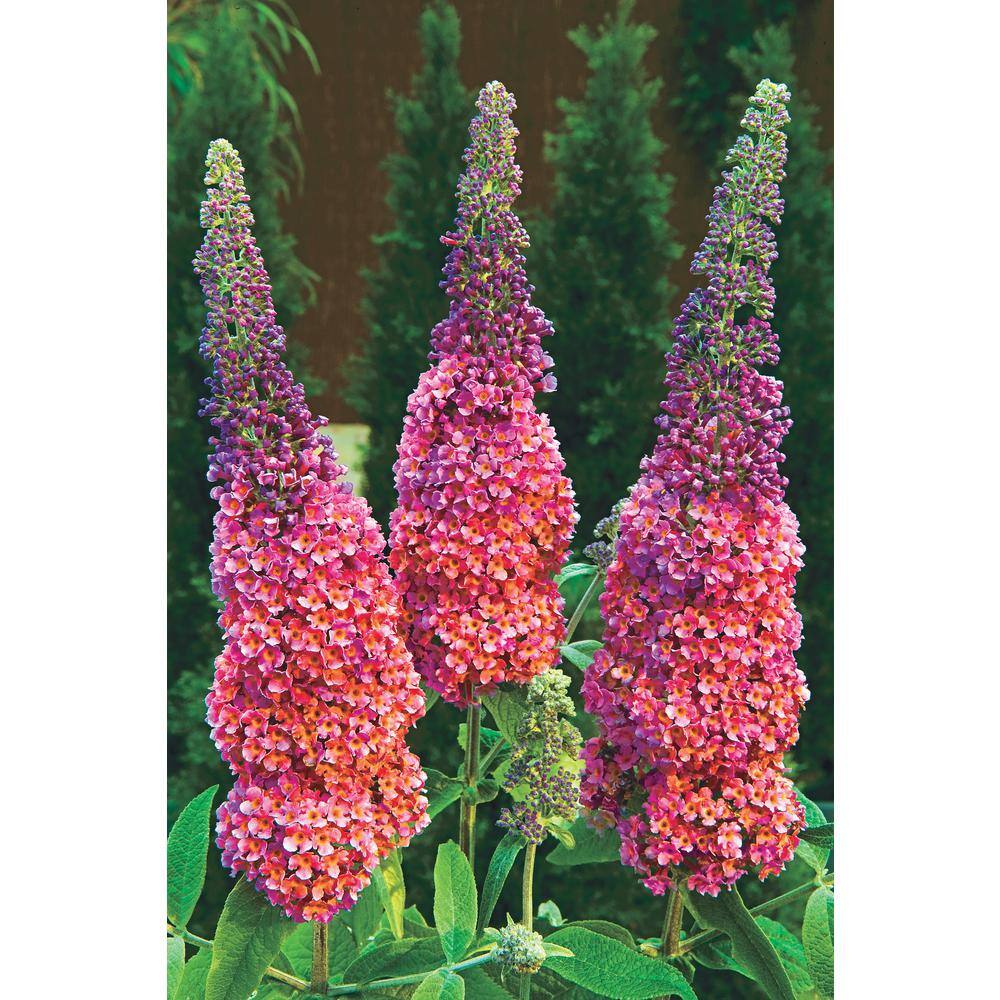

While it can help regulate the flow of water during a heavy rain, it also helps retain soil moisture that, in clay, can be a problem for sensitive roots. Mulch can be a bit tricky with Butterfly Bush. In this way, you create a small hill that encourages water to drain away from the plant rather than pool around its base. When planting your Butterfly Bush, plant “high” – meaning, that instead of positioning the plant on ground level like most plantings, keep it a bit above ground by digging a more shallow hole. Fill the container only with a fast-draining, lightweight potting mix. Be sure to select a container that has several large drainage holes, and can be left outdoors year-round. If you find you have heavy clay soil, a container might be a better choice for your Butterfly Bush. Now you have a pool of water in which the shrub’s roots sit until the water can percolate through the more dense soil – a perfect set up for root rot for plants sensitive to these conditions. By amending clay soil with potting soil, or other “good” soils, you create a condition where water gets readily absorbed by these lighter soils, only to then sit and pool once it gets to the clay portion of the ground. This is true for Butterfly Bush and any shrub you’re planting. If there is still water in the hole after four hours, you have poorly drained soil.ĭon’t amend clay soil. The faster the water disappears, the better your drainage is.

Fill it to the top with water and come back and check on it every 30 minutes or so. You can check how well your soil drains before planting anything by digging a hole about the size of the plant. While clay soils’ ability to retain water usually benefits plants, this doesn’t hold true for Butterfly Bush. Clay soil can present a problem due to its tendency to remain cold and wet. Proper soil is also essential to Butterfly Bush health. Note: If you lose a Butterfly Bush after winter, it’s more likely it died from having its roots in the cold, wet soil of spring or fall, rather than cold winter temps, snow or ice.
#KALEIDOSCOPE BUTTERFLY BUSH FULL#
This includes full sun (8 hours of bright sunlight), and excellent drainage since their roots are sensitive to rotting if they spend time in wet soil. Caterpillars and larvae require host plants in addition to Butterfly Bush to survive, so consider pairing host plants such as Milkweed, Dill and Asters along with your Butterfly Bush to ensure keeping butterflies in your garden.īutterfly Bushes are very easy to grow, but have certain requirements to ensure that they thrive. While Butterfly Bush provides nectar to adult butterflies, it is not a “host” plant – meaning, it does not sustain butterflies throughout their reproductive and entire life cycle. Opting to grow one of these new cultivars, or to plant the shrub in a container are ways of keeping invasiveness in check. That said, many new cultivars have been developed that produce sterile seeds, halting the plant’s invasive spreading habit.


There are some considerations that come with adding Butterfly Bush to your garden:īutterfly Bush, a native of China, has been classified as an invasive species in most regions in the U.S., meaning its aggressive spreading habit can crowd out native plants essential to our wildlife, birds and butterflies. Butterfly Bush (Buddleia davidii) is a beautiful, fast-growing, deciduous shrub with masses of blossoms-long, spiked trusses-that bloom from summer to autumn, making it a favorite among blooming shrubs.


 0 kommentar(er)
0 kommentar(er)
